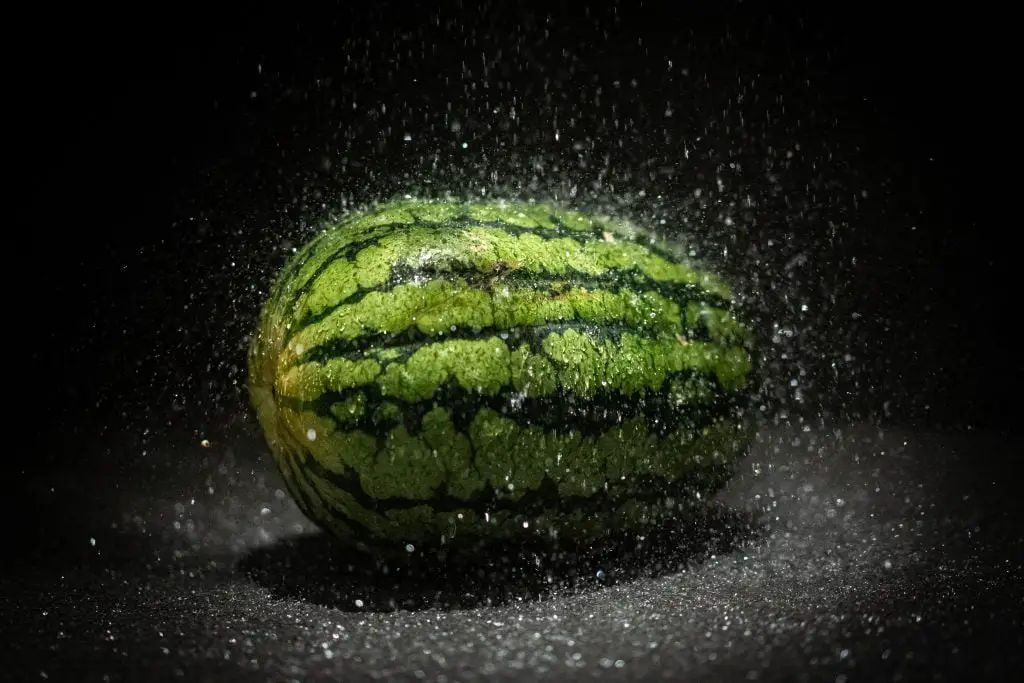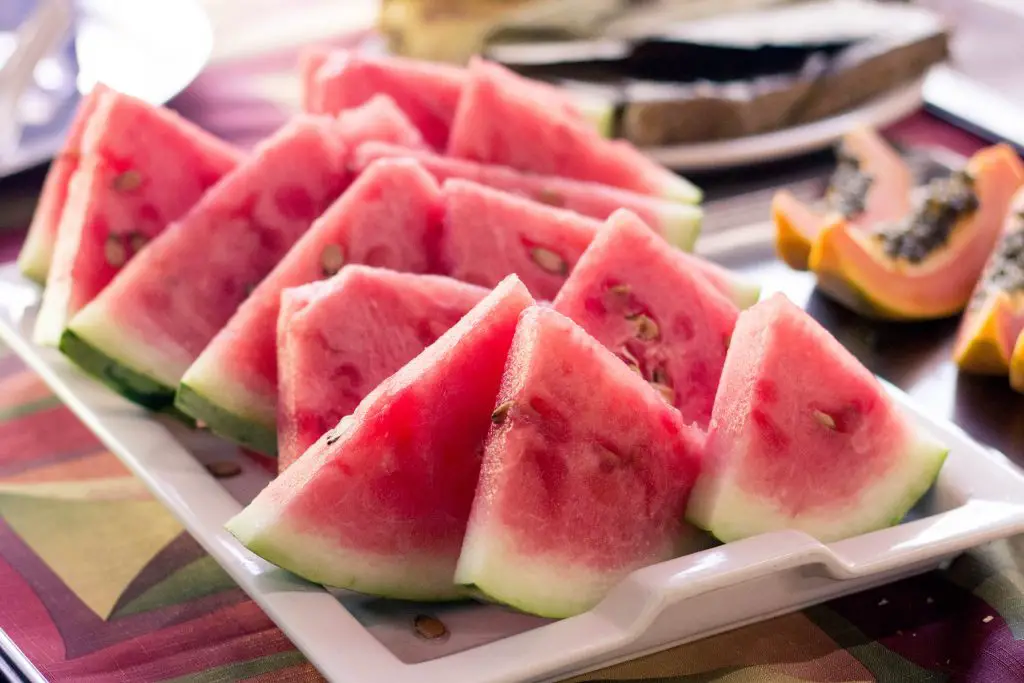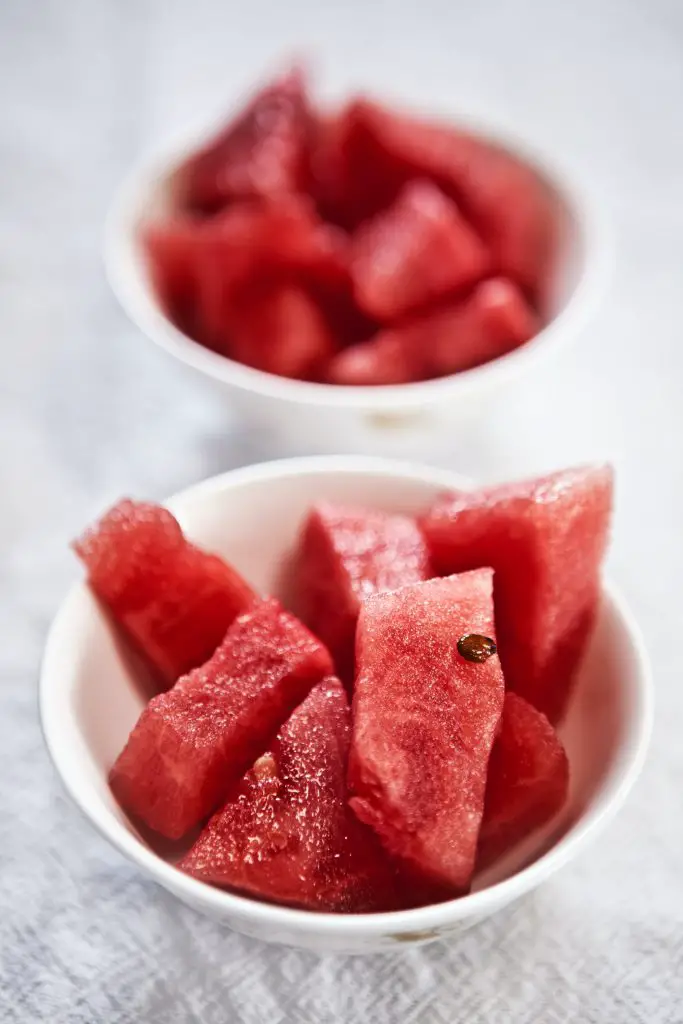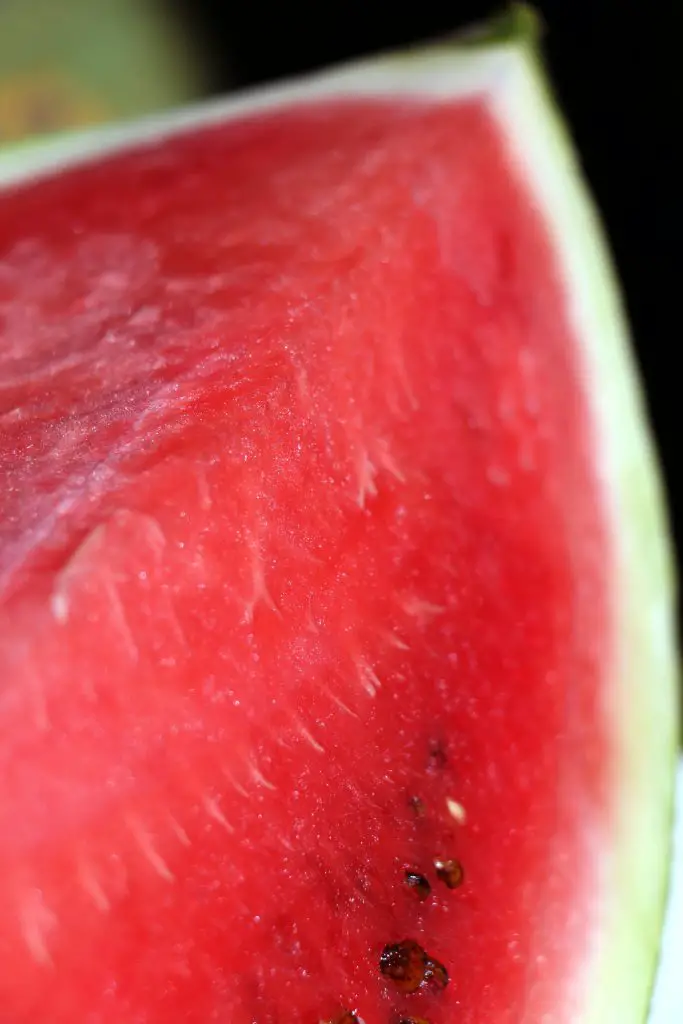What Are The Different Types Of Watermelon? There is nothing better than cooling down in Summer by eating cold Watermelon, straight from the fridge. And we are all familiar with large seedless varieties that we can get from the supermarket, however, there are over 1,000 varieties of Watermelon in existence, that come in a wide range of shapes and sizes.
Watermelons have been traditionally divided into four major groups: Seedless, Yellow-Orange Fleshed, Icebox and Picnic. Within each group, there is a range of varieties that vary in size, color, and flavor, and there is also significant overlap between the categories, as you will see.
Seedless Watermelon is the varieties that are most familiar to people as they are sold in supermarkets. However, they are a relatively recent addition to the Watermelon family, appearing the mid-1990’s. Strictly speaking, they are not truly seedless, containing small white seeds that are small and immature. This allows them to be consumed without the need to spit them out, the most common varieties are Sweet Slice, Sweet Summer, King of Hearts, Millionaire, Nova, Queen of Hearts, and Trio.
The obvious question is at this point is “How Are Seedless Watermelons Created If They Don’t Produce Seeds?” Seedless Watermelons are created, through a combination of conventional hybrid breeding, used to create F1 Hybrid seeds (to read more about hybrid seeds, go to https://planyourpatch.com/what-is-an-f1-hybrid-seed/), and the application of a plant hormone. This results in a Watermelon that is genetically different to previous generations, as the process creates seeds with 3 sets of Chromosomes (known as Triploid Seeds), rather than 2. As there is a mismatch in the number of Chromosomes, the seeds within the fruit are sterile and do not develop properly.
To grow Seedless Watermelon, cross-pollination with a seeded variety is required.

Yellow-Orange Watermelons as the name suggests is a group of Watermelons that have a flesh color, that ranges from Yellow to Orange. Their size varies from 5 to 13 Kg (10 to 30lbs). Common varieties include Orangeglo, Cream of Saskatchewan, Moon & Stars Yellow Fleshed and Sweet Siberia. Sweet Siberia could also be potentially classed as an icebox variety, due to its size. Detail on the performance of these varieties can be found by clicking on the https://planyourpatch.com/what-is-the-best-watermelon-to-grow/.
Icebox Watermelons are smaller Melons, that typically range in weight from 2 to 7 Kg (5 to 15 lbs), allowing them to fit into an Icebox or refrigerator. They are quite suitable for the home gardener, as they are much smaller in size and allow a small family to consume a whole fruit, in a single sitting. Varieties include Sugar Baby, Osh Kirgizia, Melitopolski, Chelsea, Golden Midget, Blacktail Mountain and Small Shinning Light.
Picnic Watermelons are larger than the icebox varieties, typically weighing between 5 and 25kg (15 to 50 lbs). They are suitable for feeding a large number of people at a Picnic, for example hence the name. Common varieties include Moon & Stars – Cherokee Strain, Moon & Stars – Van Dorin Strain, Jubilee and Moon & Stars – Yellow Fleshed (which could also be classified as a Yellow-Orange Watermelon as well.)

What Are The Best Varieties To Grow?
The 5 top varieties we would recommend to grow in a home garden, are
- Sweet Siberian
- Osh Kirgizia
- Picnic
- Moon & Stars – Cherokee Strain
- Moon & Stars – Van Dorin Strain
These selections are based on a study carried out at the University of California, which compared flavour, size and yield. To learn more, go to https://planyourpatch.com/what-is-the-best-watermelon-to-grow/.
If live in the US you can buy Watermelon seeds at Seeds Now as they have a fairly broad product offering that are relatively low in cost. St Clare Seeds and Seed for Generations are other companies that also offer heirloom varieties but are slightly more expensive in the US.
How To Grow Watermelon
Watermelons like Pumpkins, Squash, Corn and Zucchini are members of the Cucurbit family. However, unlike many of the other plants in this family, they originated in Africa rather than the Americas, and have been cultivated for at least 7,000 years. There is evidence that they were a common food in ancient Egypt.

Due to their proximity to Europe, they were introduced much earlier than other Cucurbits, which did not arrive until the 16th Century. Subsequently, many varieties of Watermelon were developed to suit Northern European climates.
Watermelon is a frost-tender plant that requires warm conditions to thrive. They are grown on a sprawling vine, that serves as a useful ground cover when planted with corn. The size of the vine of some commercial varieties can sprawl up to 30 metres (100 ft), making some unsuitable for home gardens.
Watermelon seedlings are best established in Spring and early Summer, by direct sowing into the soil or in modular trays. However, if sowing in early Spring, it is best to sow them in modular trays undercover, as they require at least 15°C (59°F) to germinate.
Seedlings will take 4 to 6 weeks before they are large enough to plant. When planting them out, ensure that the daytime temperature is at least 20°C (68°F) or higher, as temperatures below this will inhibit the formation of flowers. If this is a problem, cool tolerant varieties such as Sweet Siberia are recommended.

When planting the seedlings out into the garden, they should be spaced 75cm (3 ft) apart, in moist rich soil with plenty of compost. The ideal pH is approximately 6.5 to 7.0, to learn more about how to test pH and adjust soil, go to https://planyourpatch.com/why-is-ph-important-in-soil/.
The Watermelons will spread along the ground rapidly and will often escape into neighbouring garden beds if given the opportunity. If this is a problem, it can be controlled by pinching out the growing tips. Throughout the growing seasons, ensure that the plants have adequate moisture by watering regularly.
Determining when Watermelon is ripe, even for the most experienced gardeners, is sometimes difficult. One method used, is to look closely at the tendrils located on the vine, at the point at which the fruit is attached to the main vine. If this tendril has dried out, it is usually ready to eat. The second indicator is the color of the section of the Melon, that is in contact with the ground. In immature Melons, this patch is typically a Whitish Green colour. This color will change to a pale yellow color, when the fruit is ripe. The third, and most commonly used method, is tapping on the fruit and listening for a hollow sound. In our view, this is the least reliable method of the three.
How To Store Watermelon
A whole Watermelon will store for approximately 4 to 6 weeks, outside of the fridge. When cut, it will only store for around 3 days. It maybe frozen in cubes for longer-term storage.
